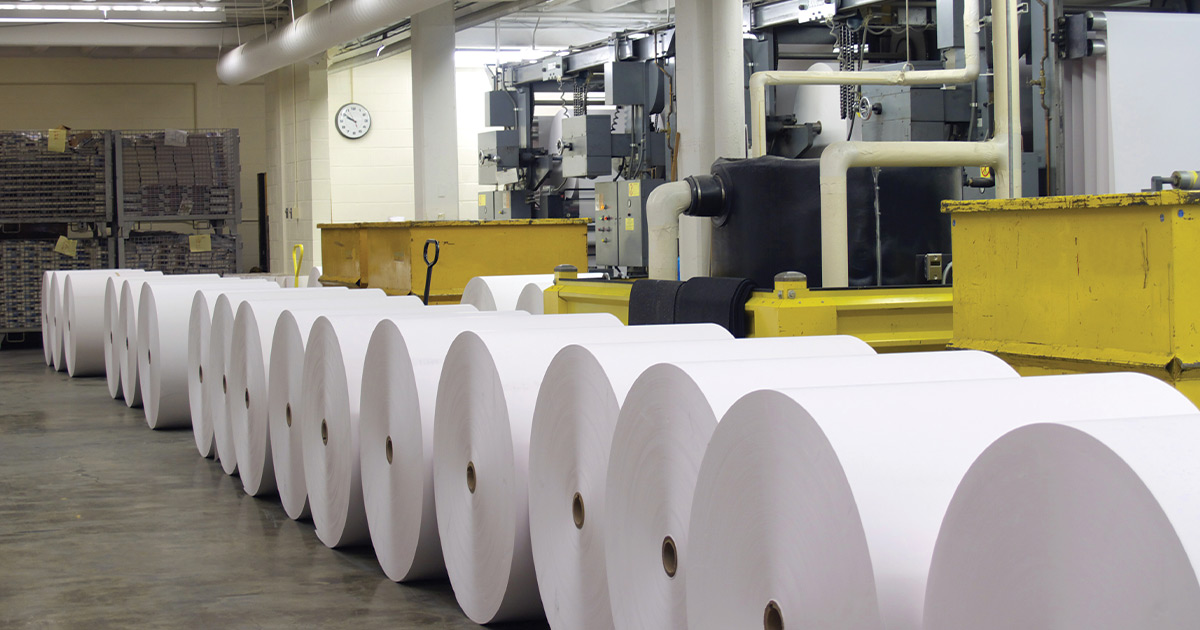Most print buyers (whether from the purchasing or marketing departments) are concerned about the impact of inflation on their printing budget. With that singular thought, have you ever thought about printing costs as compared to the rate of inflation over time?
Most of us frankly haven’t even considered that. Print pricing has been relatively stable for a number of years, but with the record inflation over the last year, we thought it would be interesting to break down and compare the price of print to the current rate of inflation.
Innovation in the printing industry allowed collateral to be printed at lower costs each year.
Supply chain updates, equipment improvements and process optimization all led to efficiencies that drove costs down. Over the past handful of years though we’ve reached a point where print can’t really go much lower. For example, high-volume inkjet web presses can run at speeds over 600 feet per minute producing at a rate of more than 2,400 pages in a minute. This hyper-efficient equipment now used in most printing companies has driven down the price per printed page.
So, the question becomes how are these costs holding up today and what does it mean when inside a period of hyperinflation?
Do Print Prices Rise When Inflation Goes Up?
Technically yes, what you’ll find is that because the cost of print was at an all-time low for over a decade and nearly bottomed out, any effect on the cost of materials or within the supply chain to get print done will increase the cost of the printing.
Here we look at a few reasons cost can go up during a period of high inflation.
Three Leading Factors in Rising Print Costs
- Higher Paper Costs – Paper prices have jumped significantly over the past year and are predicted to climb a little higher throughout the rest of this year. The fact that the majority of printing is done on paper makes it easy to understand that if the cost of paper goes up, so does the final printed piece.
- Higher Labor Costs – With rising minimum wage, employee expectations of inflated salaries and perks to satisfy the fight for talent it again is easy to see how costs could go up when the cost of the labor goes up as well. Again, this is an incremental increase due to the efficiencies built into the printing process.
- Higher Postage Costs – While this doesn’t impact the printing cost it does add to the overall cost of any print that you mail out such as direct mail or transactional mail. Beginning in 2007, increases in the postage rates were tied to the rate of inflation. Then they adopted rules to implement increases above inflation. This led to the Postmaster General taking advantage of this new rate authority, and in 2021 we saw two postage rate increases – a practice that will continue into 2023.
Printers are Providing Higher Value than Ever Before
With print prices and costs being subjected to commodity level fluctuations there has to be something which can be controlled to provide more value so any increase in cost is offset by the value-added services or products print companies can provide to improve the outcomes of your printed projects.
Improved Targeting Capabilities
With the help of improved software and the power of big data, print companies are able to provide a level of accuracy and granularity that has never before been possible. This allows the print budget to be maximized in a way that keeps costs as low as possible but delivers a return on investment that goes well beyond what’s been achieved in the past.
Personalization
Printing technology has advanced to the point that nearly every part of a printed piece can be personalized to the recipient. If you have the data and can dream up a creative use for that data, then it can be included in the printing process of the piece.
Additionally, the physical printed piece can be paired with digital initiatives where all channels complement each other in harmony to deliver greater and greater results.
The power of data continues during the mailing process. Inkjet printers personalize envelopes. USPS Informed Delivery adds a visual, digital, internet-enabled message to the recipient. QR codes on the physical piece unveil an augmented reality experience. Additional digital messaging – text, email and social media – are timed based on data from USPS Informed Visibility.
So, print prices are affected by inflation and tend to go up, but the reality is that those costs are very minimal overall. And the level of service & value that you should be getting from your print partner needs to be so good that it makes up for even the smallest increase.
Contact Us Now for More Information

